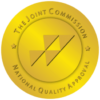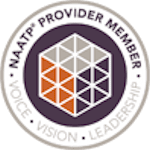Jump to Section
Opiate Overdose Timeline
The opiate epidemic in the United States is alarming for many people. We hear about it on the news, read about it in the papers, and some people may even know of someone who has experienced drug addiction. Overdoses are especially worrisome for loved ones of those dealing with substance use disorder. It can cause fear and worry among those who are closely associated with the person using drugs. You may be concerned about an opiate overdose timeline.
If you or a loved one suffer from opiate addiction, be prepared. Knowing the opiate overdose timeline could help save someone’s life.
Overdosing — What Happens?
 You may wonder how anyone can overdose on opiates if they have built up a tolerance to them. If a person has been doing the drugs for a while, why would they suddenly overdose?
You may wonder how anyone can overdose on opiates if they have built up a tolerance to them. If a person has been doing the drugs for a while, why would they suddenly overdose?
For one thing, the person may get drugs that are cut with something poisonous or deadly like fentanyl. Another reason they may overdose is if they were abstinent for a short period like during rehab or prison time. After re-entering society, they relapse and return to their addiction. However, the body has not readjusted and rebuilt its tolerance, leading to an overdose.
The main signs of a drug overdose are:
- Shallow breathing and/or a gurgling sound in the throat
- Bad pulse, blood pressure, or heart rate
- Cold or clammy skin
- Getting sick to their stomach
- Possibly having a seizure, acting confused
- Unconsciousness
Opiate Overdose Timeline
People wonder what an opiate overdose timeline looks like, so they can help save a life or maybe, so they know when to call for help. It’s critical to seek help right away because most people don’t die immediately when they overdose. While everyone is different, it does take some time before an overdose would lead to death, so getting help for someone is critical.
When looking at the opiate overdose timeline, the person may start out being extremely agitated and confused, then start experiencing breathing difficulties or get a severe headache. This can last for several minutes or even a couple of hours. However, these are warning signs that shouldn’t be ignored. You don’t want to wait until the person is unconscious to get help.
If someone is experiencing any of the overdose symptoms, you should seek help for that person. You definitely don’t want to ignore an unusual breathing sound that sounds like snoring or gurgling. If you see or hear this, attempt to wake the person up as you call 911.
Find Help Today
Find help for your loved one at Northern Illinois Recovery. We understand the challenges of having a loved one in need. Our compassionate specialists are standing by ready to assist you. At the start of your recovery process, we offer drug and alcohol detox. For opiate users, withdrawal is particularly intense, and virtually impossible to withstand while quitting “cold turkey”. Doctors and medical experts highly recommend undergoing withdrawal in a detox program. Medical supervision helps prevent relapse, and also gives patients like you on-site protection from the sometimes-fatal effects of opiate, alcohol, and benzo withdrawal. Detox purges the body, and is the first step in every recovery journey.
After detox, the next step is to undergo therapy in rehab. We use evidence-based therapy programs to help resolve the underlying issues of addiction.
Don’t let opiate addiction harm your loved one. Now that you know more about the opiate overdose timeline, find help by contacting us at 855.786.1978. We’ll walk with you every step of the way.


Licensed Physician and Surgeon
Dr. Beth Dunlap, a board-certified addiction medicine and family medicine physician, and is the medical director at Northern Illinois Recovery Center. She is responsible for overseeing all the integrated medical services at both campuses. Beth completed medical school, residency, and fellowship at Northwestern University, where she continues to serve on the faculty as a member of the Department of Family and Community Medicine. She has extensive experience in addiction medicine at all levels of care, and her clinical interests include integrated primary care and addiction medicine, harm reduction, and medication-assisted treatment.



